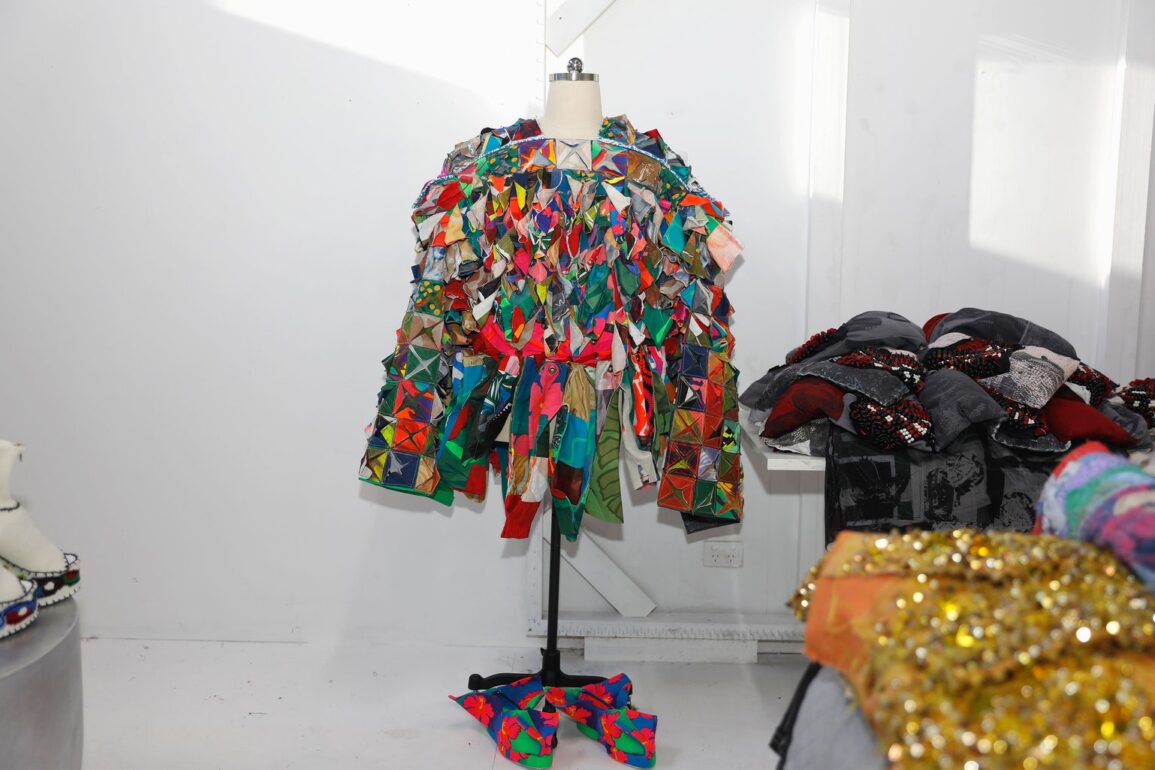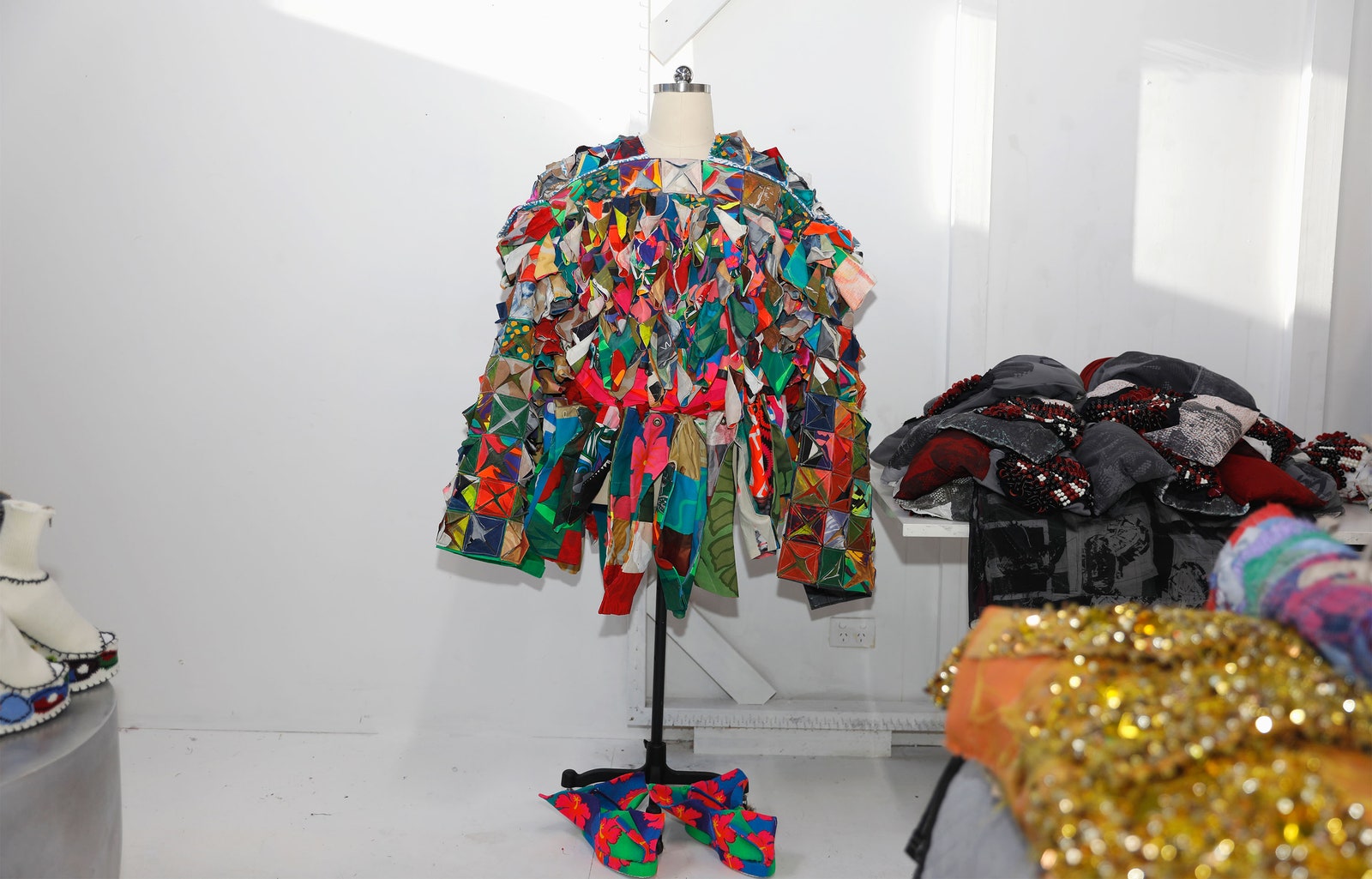The support of galleries and collectors, Gogos says, is how he stays afloat. He doesn’t get how others do it. “I would never be able to run a business from selling a shirt and making $100 profit,” he says. “I don’t know how people do it. I worked out that, for the amount I make from one piece, I’d have to sell like 120 T-shirts.” Iordanes Spyridon Gogos runway pieces sell for a minimum of AU $7,500, and AU $15,000 for a full set.
It’s a twist on a challenge many designers face. Where many yearn to create more avant-garde, conceptual pieces — but need to make tees and tanks to bring in cash — Gogos has carved out a niche that enables him to support a fashion business with garments that wind up in galleries.
Five years in, the self-funded brand is making revenues upwards of AU $250,000 a year, and growth has been steady, he says, after hitting its stride in year three. Now, Gogos is figuring out how to continue to develop his art-fashion practice, while elevating his name as a capital-F fashion designer.
Support systems
“In Australia, everyone thinks that if you’re a talented designer, it equals success,” Gogos says. In reality, it takes a lot more than talent. Gogos is constantly navigating a lack of financial support, recalling, comparatively, the resources he was able to access in New York, even as a student at Parsons School of Design.
Gogos now sees many of his Parsons peers reaping the benefits of the awards and incubators on offer overseas that aren’t accessible in Australia. Jacques Agbobly, for instance, was a classmate and friend. He’s participated in Fashion Trust US (where he won the Inclusivity Award) in 2023 and the 2024 LVMH Prize. “That’s not even something I can consider from Australia,” Gogos says. “Maybe I can apply for the Woolmark Prize.”
This post was originally published on this site be sure to check out more of their content









